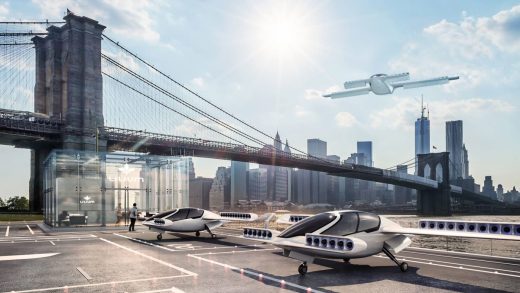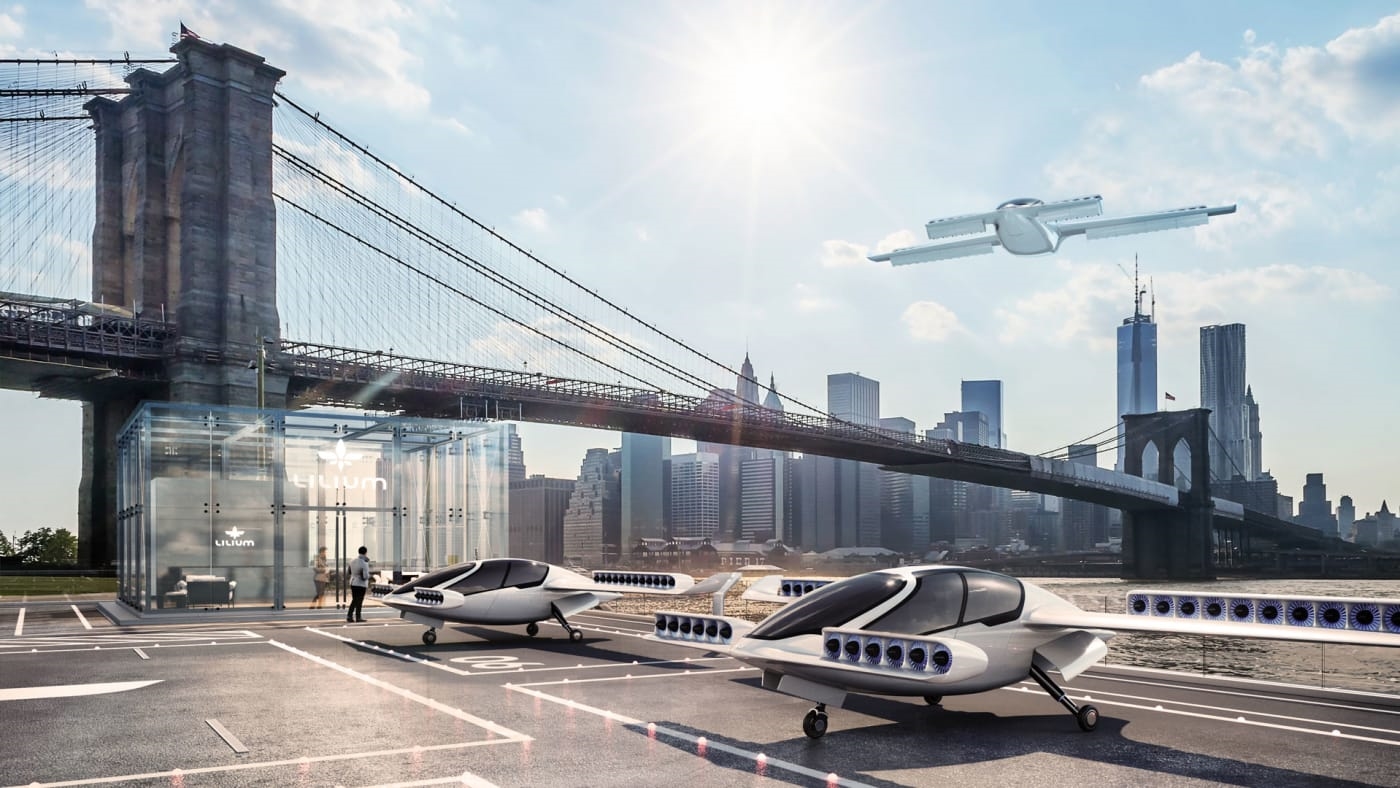The Modern Mini Cooper’s Designer Is Now Working On Flying Cars
Over the decades, Anglo-American automotive designer Frank Stephenson has reshaped our expectations for what transport should look and feel like—from the 60-horsepower Fiat 500 subcompact to the 600-horsepower McLaren 12C supercar. He’s also designed cars for Ferrari, Maserati, and BMW, but Stephenson’s best-known work may still be the reboot of Britain’s Mini brand as the zippy, playful Mini Cooper in late 2000. Now as flying cars are on the cusp of reality, Stephenson is taking his ideas to the sky, with a new gig heading the design team for German electric plane maker Lilium.
In 2017, the Munich-based startup stunned the internet with video of its four-winged pod hopping straight into the air, propelled by 36 electric turbofan engines. As the craft rises, its 12 banks of engines tilt back, converting into a plane that Lilium claims can zoom at 186 miles per hour, taking up to five people on voyages up to 186 miles. That’s faster and farther than other electric vertical take-off and landing (eVTOL) prototypes from Airbus and Uber’s air taxi partners are claiming.
While the basic form of Lilium’s yet-to-be-named jet is set by engineering, the company wouldn’t have recruited a rock star car designer (and subject of an upcoming documentary) if there weren’t room to considerably shape the look of the craft. Stephenson was coy about predicting when we might see his team’s design work. (Service, in the U.S. and other regions, won’t launch until 2025.) But his pedigree and description of goals and motivations in our talk offer some tantalizing hits. Following is a condensed version of a longer conversation.
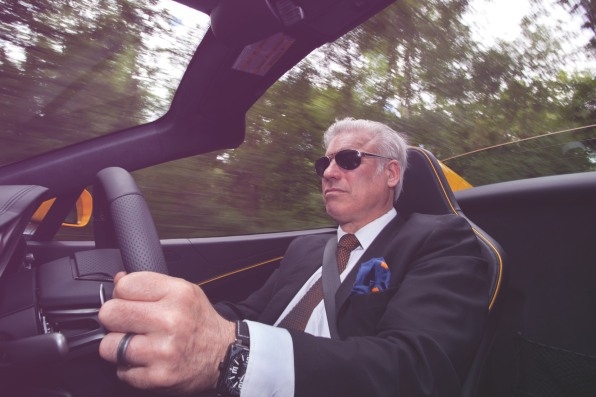
Fast Company: You’ve done things from plucky little cars like the Fiat 500 all the way to McLaren hypercars. Where do you see Lilium fitting in there?
Frank Stephenson: I started thinking about this last year. Driving cars is all great and fun, but it can’t be the ultimate solution to getting people from one place to another in a quick amount of time and with enjoyment. I left McLaren in November of ’17 with the idea that there has to be something more, and I want to be responsible for it.
I’ve always been interested in aviation and transportation, but I never started to think about moving people the way that Lilium does. Lilium and I got into contact, and they explained that this is something that they’ve already got a prototype for flying. It’s making science fiction real right now.
FC: Does Lilium seem like it’s at the stage of a supercar or a hypercar in the evolution of the technology?
FS: Probably in terms of technology, yeah. But the thing we have to remember is that supercars and hypercars are not needed. They’re luxuries. But Lilium is bringing [its technology] to the people in such a way that anybody who gets into a taxi today would just as well get into [its] eVTOL aircraft to be much quicker in getting to their destination.
FC: What is your overall goal for taking this job at Lilium?
FS: You don’t get into a taxi and want to stay in it, but I think you’ll have that feeling when you get into a Lilium jet. At least that’s my goal. The kids are going to be screaming at the parents, “Let’s go in that jet!”
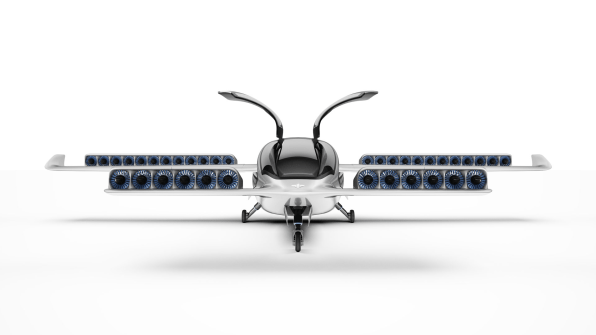
FC: It looks like in the automotive industry you have a lot of flexibility for what the exterior of the car can be like. Are you more restricted in what you can do in aerospace?
FS: It’s easy to design a beautiful car, but it’s more difficult when you have legislation that restricts you in terms of clearances, crash regulations, visibility regulations, ergonomics, aerodynamics, heating, cooling. That’s the hard part of car design: making something that looks good work.
For me, designing a Lilium jet is not going to be a fight against the engineers to get the jet to look absolutely stunning and disregard a lot of the principles that will make it absolutely efficient. For me the challenge will be to take the engineers’ best solution . . . and make it look as incredible as that technology can be.
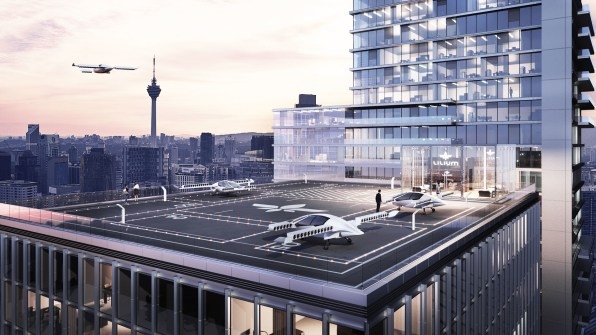
FC: Can we expect that the final product will look a lot different from the prototype that has flown?
FS: It’s going to come down to optimizing everything that’s on there, and the aerodynamics probably won’t change a lot, simply because they work. But there’s a lot that you can do in that whole area.
But the most amazing part of it is in the interior. The occupants should feel that the interior design delivers a magical experience in that it considers not only what they need, but also delivers more than what they expect.
The aim is to achieve this by offering a technologically advanced environment within that space, a comfortable interior full of impressive content, and surprising materials in a simple, nonintrusive manner. The journeys can be customized to be relaxing, entertaining, educational, or even as an extension of their interactive working space.
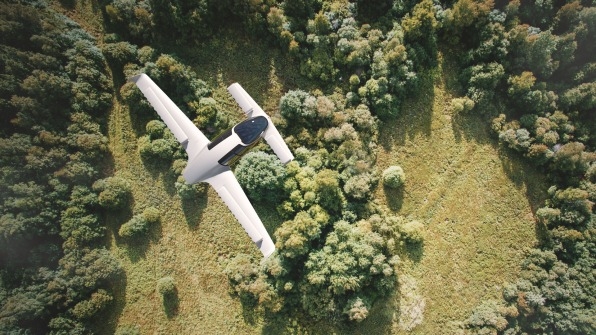
FC: Are there particular kinds of aesthetic notions that you want to bring to the look at this?
FS: I am heavily into nature and into biomimicry, simply because it’s intelligent design and it works. My approach when I start working at Lilium is that anything goes as long as it works hand in hand or very closely with the engineering requirements. What I want to do is optimize the engineering in an aesthetic way that makes it absolutely stunning to look at, and obviously in the way it performs.
That jet, when you walk up to it the first time, has to make you want to get into it. It can’t look super aggressive. So there is going to be an element of making it look safe and reliable when you walk up to it, but it has to be that kind of love-at-first-sight feeling when you see it.
(39)

